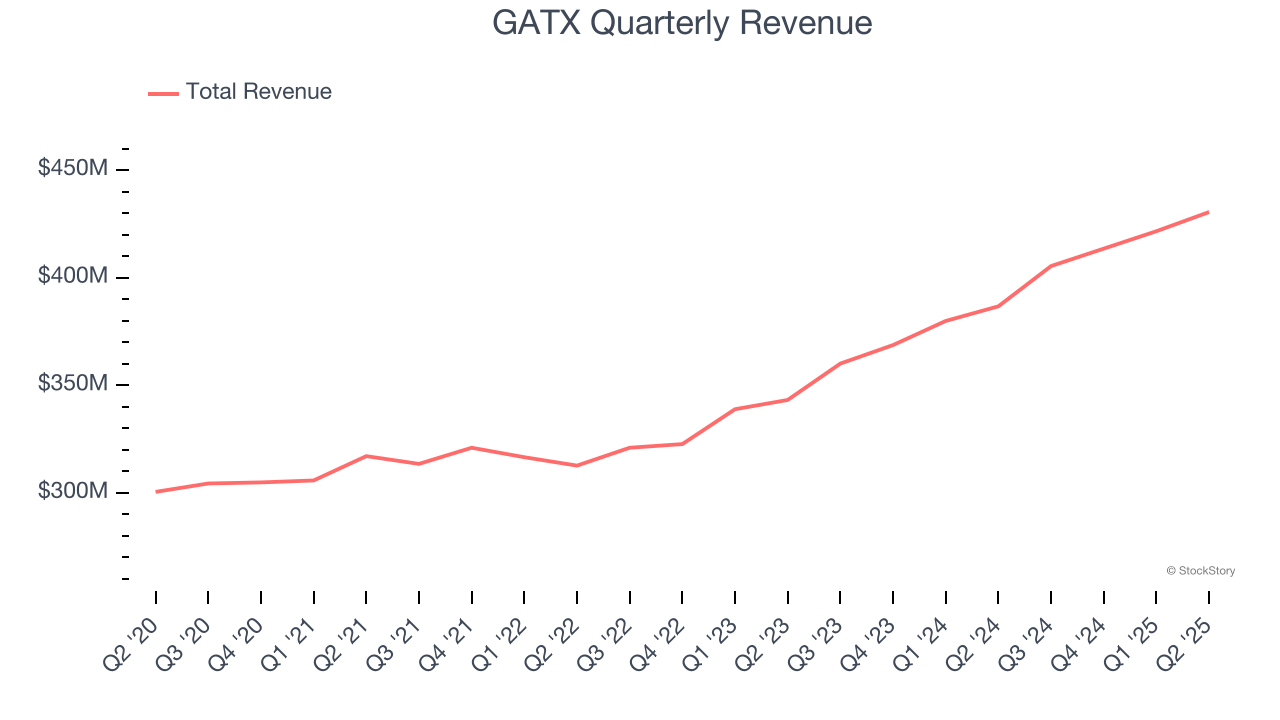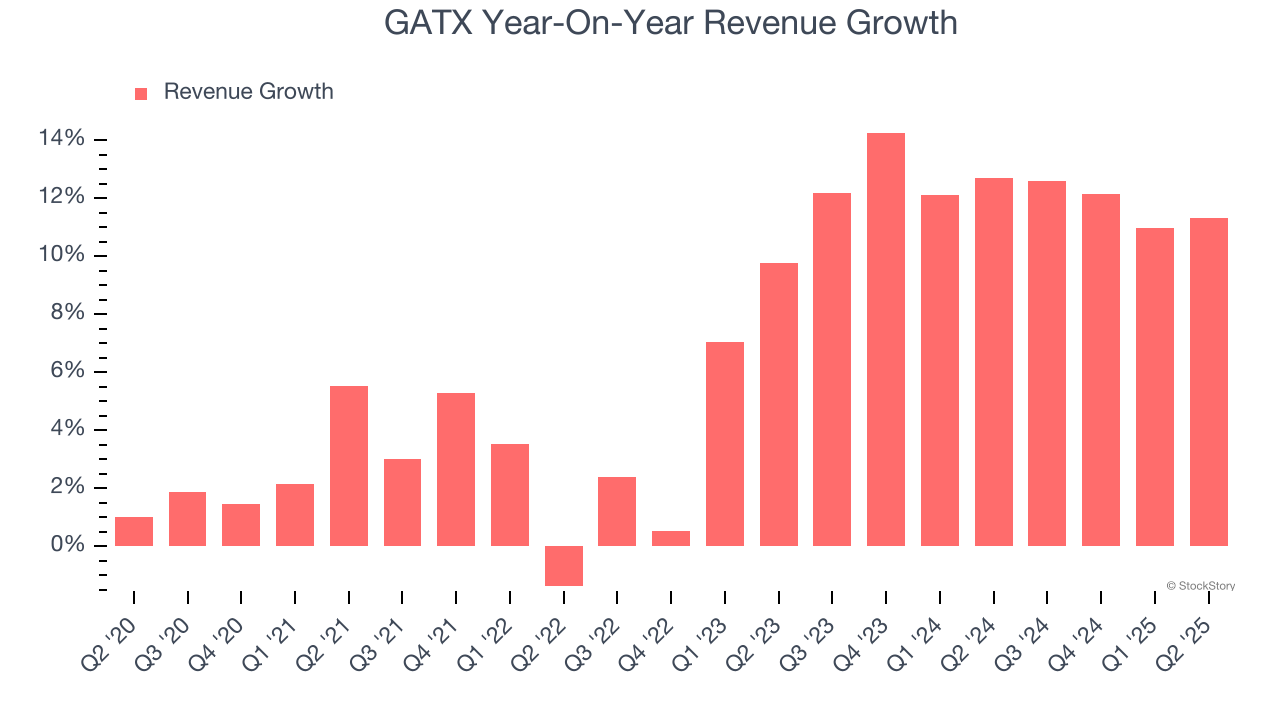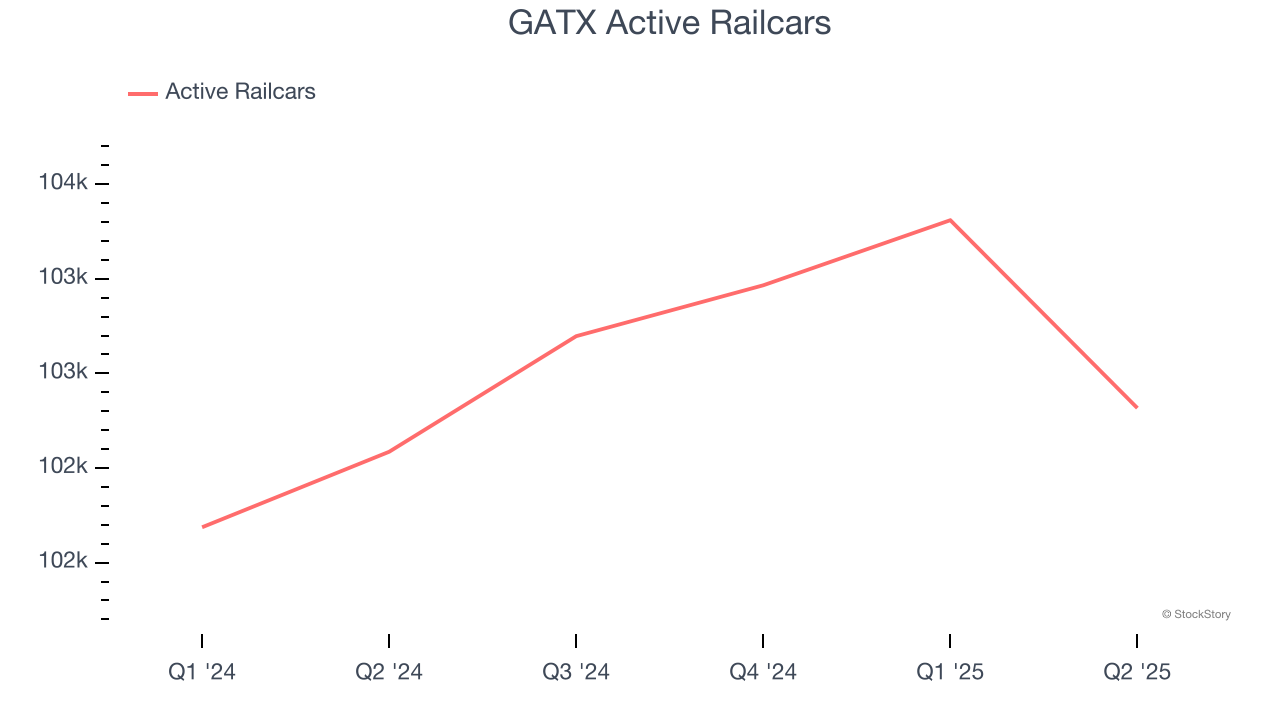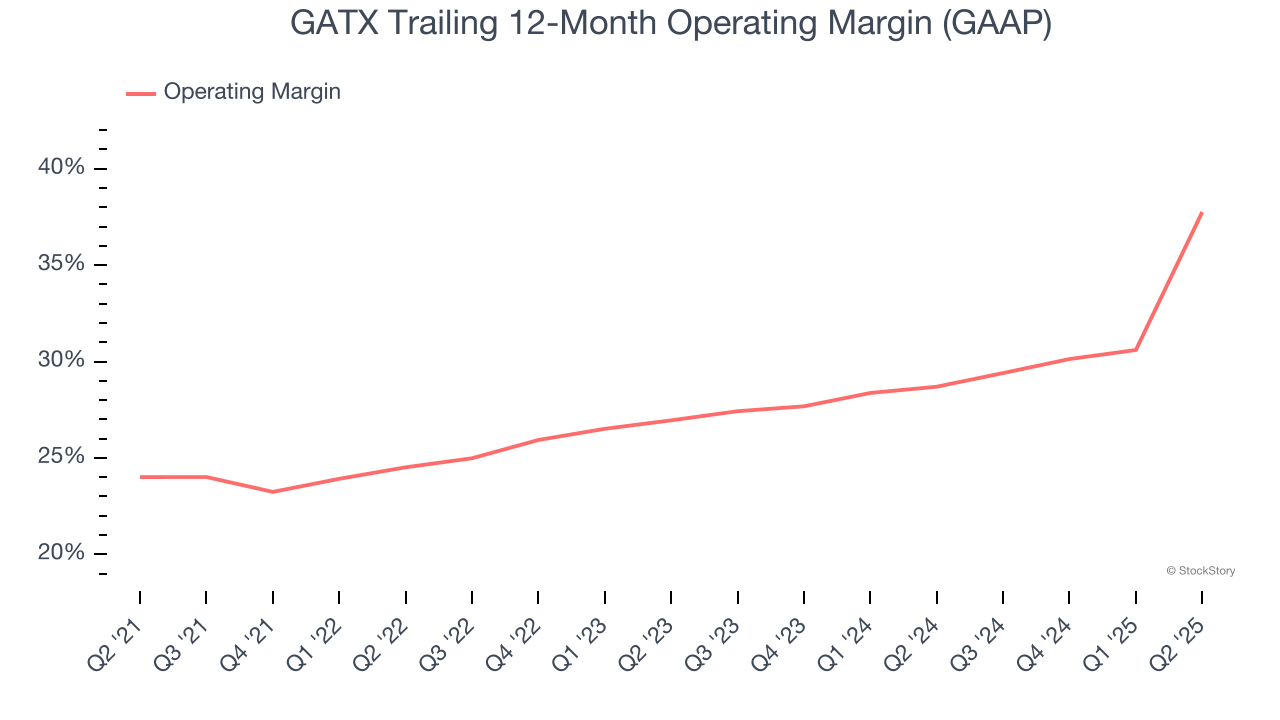
Leasing services company GATX (NYSE:GATX) reported Q2 CY2025 results beating Wall Street’s revenue expectations, with sales up 11.3% year on year to $430.5 million. Its GAAP profit of $2.06 per share was 2.5% above analysts’ consensus estimates.
Is now the time to buy GATX? Find out by accessing our full research report, it’s free.
GATX (GATX) Q2 CY2025 Highlights:
- Revenue: $430.5 million vs analyst estimates of $427.1 million (11.3% year-on-year growth, 0.8% beat)
- EPS (GAAP): $2.06 vs analyst estimates of $2.01 (2.5% beat)
- Adjusted EBITDA: $351.1 million vs analyst estimates of $304.3 million (81.6% margin, 15.4% beat)
- EPS (GAAP) guidance for the full year is $8.70 at the midpoint, roughly in line with what analysts were expecting
- Operating Margin: 56.7%, up from 28.8% in the same quarter last year
- Active Railcars: 102,317, in line with the same quarter last year
- Market Capitalization: $5.44 billion
Company Overview
Originally founded to ship beer, GATX (NYSE:GATX) provides leasing and management services for railcars and other transportation assets globally.
Revenue Growth
A company’s long-term sales performance is one signal of its overall quality. Any business can put up a good quarter or two, but the best consistently grow over the long haul. Over the last five years, GATX grew its sales at a mediocre 6.9% compounded annual growth rate. This fell short of our benchmark for the industrials sector and is a tough starting point for our analysis.

Long-term growth is the most important, but within industrials, a half-decade historical view may miss new industry trends or demand cycles. GATX’s annualized revenue growth of 12.3% over the last two years is above its five-year trend, suggesting its demand recently accelerated. 
GATX also discloses its number of active railcars, which reached 102,317 in the latest quarter. Over the last two years, GATX’s active railcars were flat. Because this number is lower than its revenue growth during the same period, we can see the company’s monetization has risen. 
This quarter, GATX reported year-on-year revenue growth of 11.3%, and its $430.5 million of revenue exceeded Wall Street’s estimates by 0.8%.
Looking ahead, sell-side analysts expect revenue to grow 5.9% over the next 12 months, a deceleration versus the last two years. This projection is underwhelming and indicates its products and services will face some demand challenges.
Software is eating the world and there is virtually no industry left that has been untouched by it. That drives increasing demand for tools helping software developers do their jobs, whether it be monitoring critical cloud infrastructure, integrating audio and video functionality, or ensuring smooth content streaming. Click here to access a free report on our 3 favorite stocks to play this generational megatrend.
Operating Margin
GATX has been a well-oiled machine over the last five years. It demonstrated elite profitability for an industrials business, boasting an average operating margin of 28.9%. This result isn’t surprising as its high gross margin gives it a favorable starting point.
Looking at the trend in its profitability, GATX’s operating margin rose by 13.7 percentage points over the last five years, as its sales growth gave it operating leverage.

This quarter, GATX generated an operating margin profit margin of 56.7%, up 28 percentage points year on year. The increase was solid, and because its operating margin rose more than its gross margin, we can infer it was more efficient with expenses such as marketing, R&D, and administrative overhead.
Earnings Per Share
Revenue trends explain a company’s historical growth, but the long-term change in earnings per share (EPS) points to the profitability of that growth – for example, a company could inflate its sales through excessive spending on advertising and promotions.
GATX’s EPS grew at a solid 10.7% compounded annual growth rate over the last five years, higher than its 6.9% annualized revenue growth. This tells us the company became more profitable on a per-share basis as it expanded.

We can take a deeper look into GATX’s earnings to better understand the drivers of its performance. As we mentioned earlier, GATX’s operating margin expanded by 13.7 percentage points over the last five years. This was the most relevant factor (aside from the revenue impact) behind its higher earnings; interest expenses and taxes can also affect EPS but don’t tell us as much about a company’s fundamentals.
Like with revenue, we analyze EPS over a more recent period because it can provide insight into an emerging theme or development for the business.
For GATX, its two-year annual EPS growth of 20% was higher than its five-year trend. We love it when earnings growth accelerates, especially when it accelerates off an already high base.
In Q2, GATX reported EPS at $2.06, up from $1.21 in the same quarter last year. This print beat analysts’ estimates by 2.5%. Over the next 12 months, Wall Street expects GATX’s full-year EPS of $8.74 to grow 5.9%.
Key Takeaways from GATX’s Q2 Results
We were impressed by how significantly GATX blew past analysts’ EBITDA expectations this quarter. We were also glad its full-year EPS guidance slightly exceeded Wall Street’s estimates. Overall, we think this was a solid quarter with some key areas of upside. The stock remained flat at $152.47 immediately after reporting.
So do we think GATX is an attractive buy at the current price? If you’re making that decision, you should consider the bigger picture of valuation, business qualities, as well as the latest earnings. We cover that in our actionable full research report which you can read here, it’s free.
